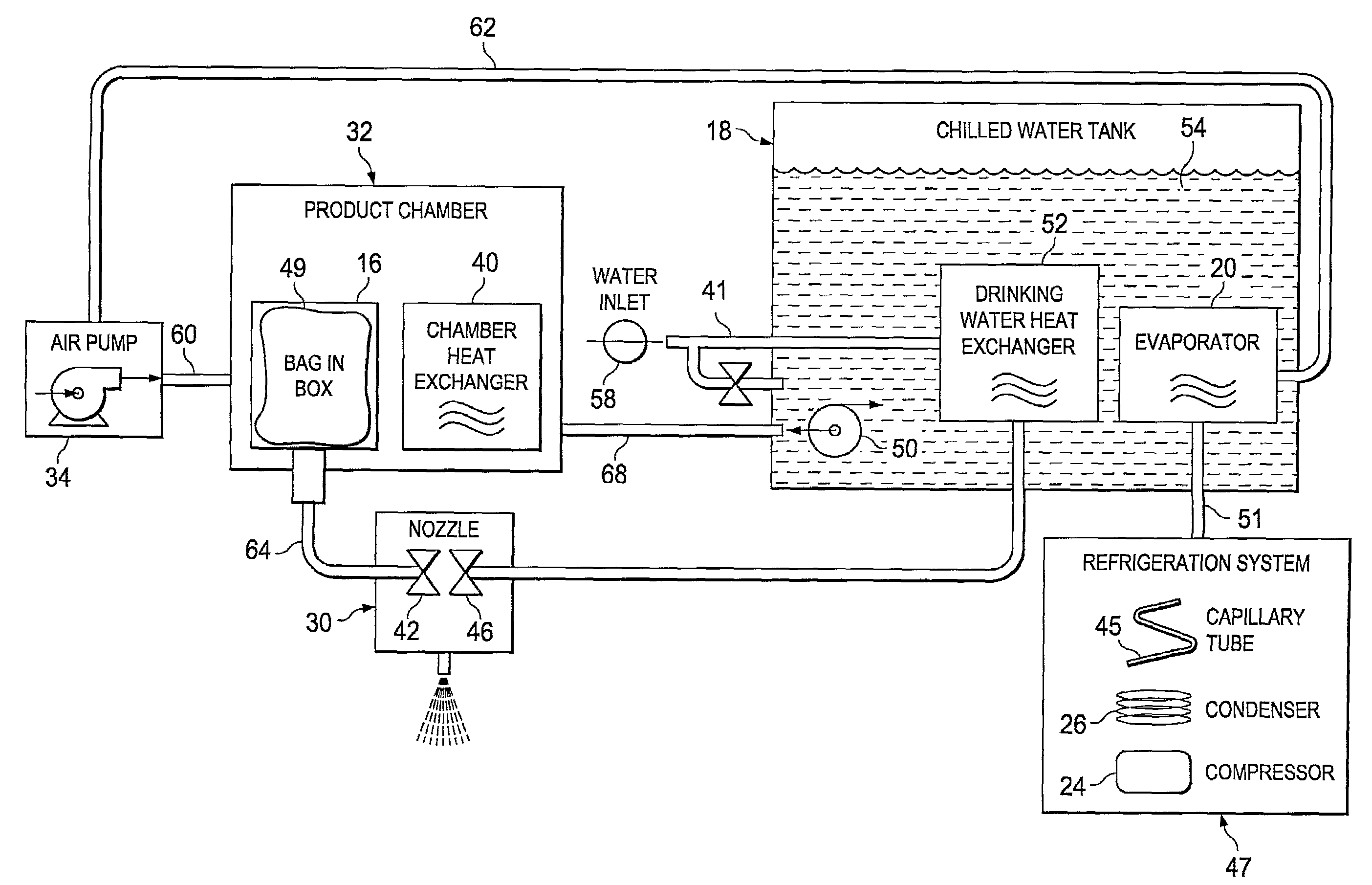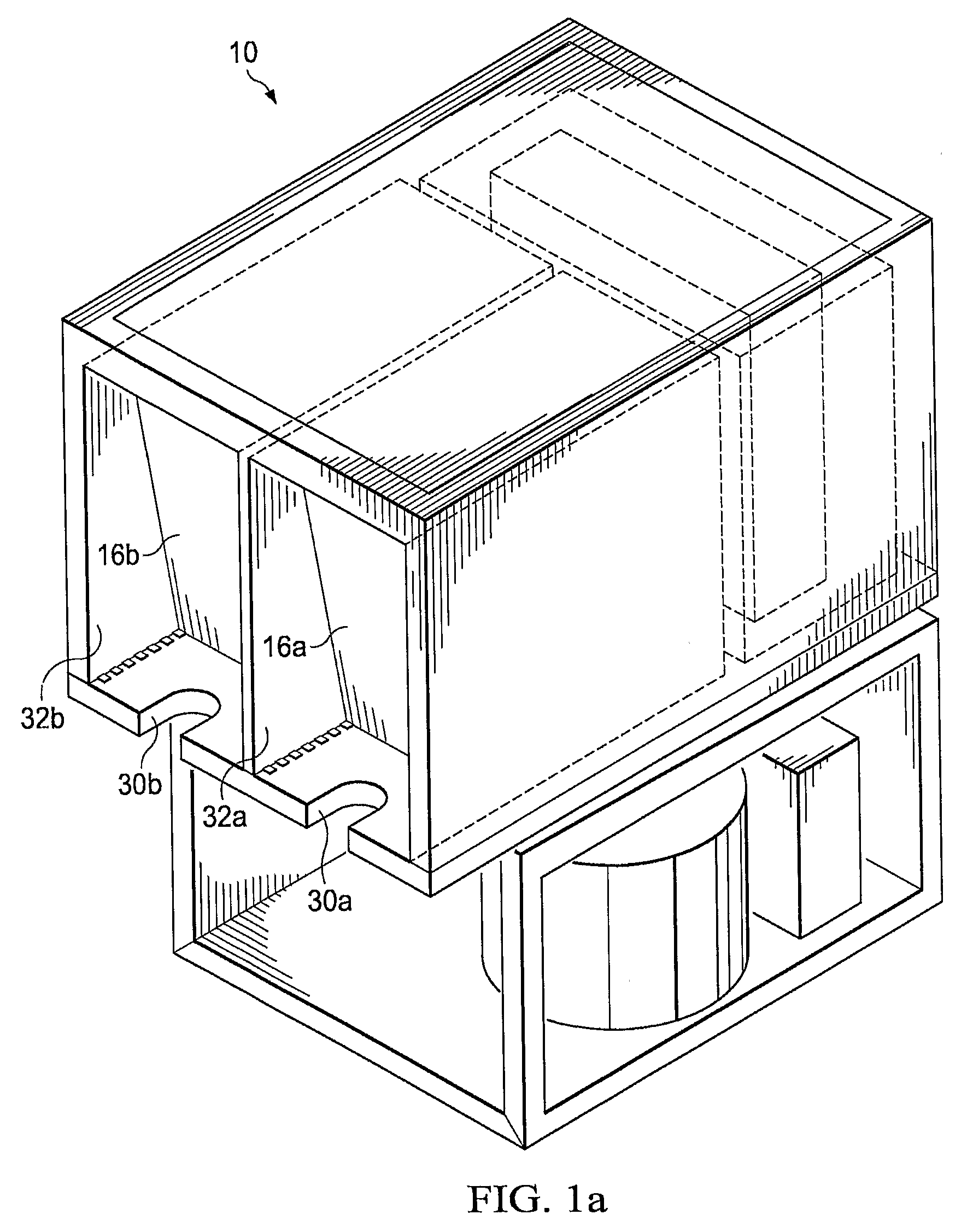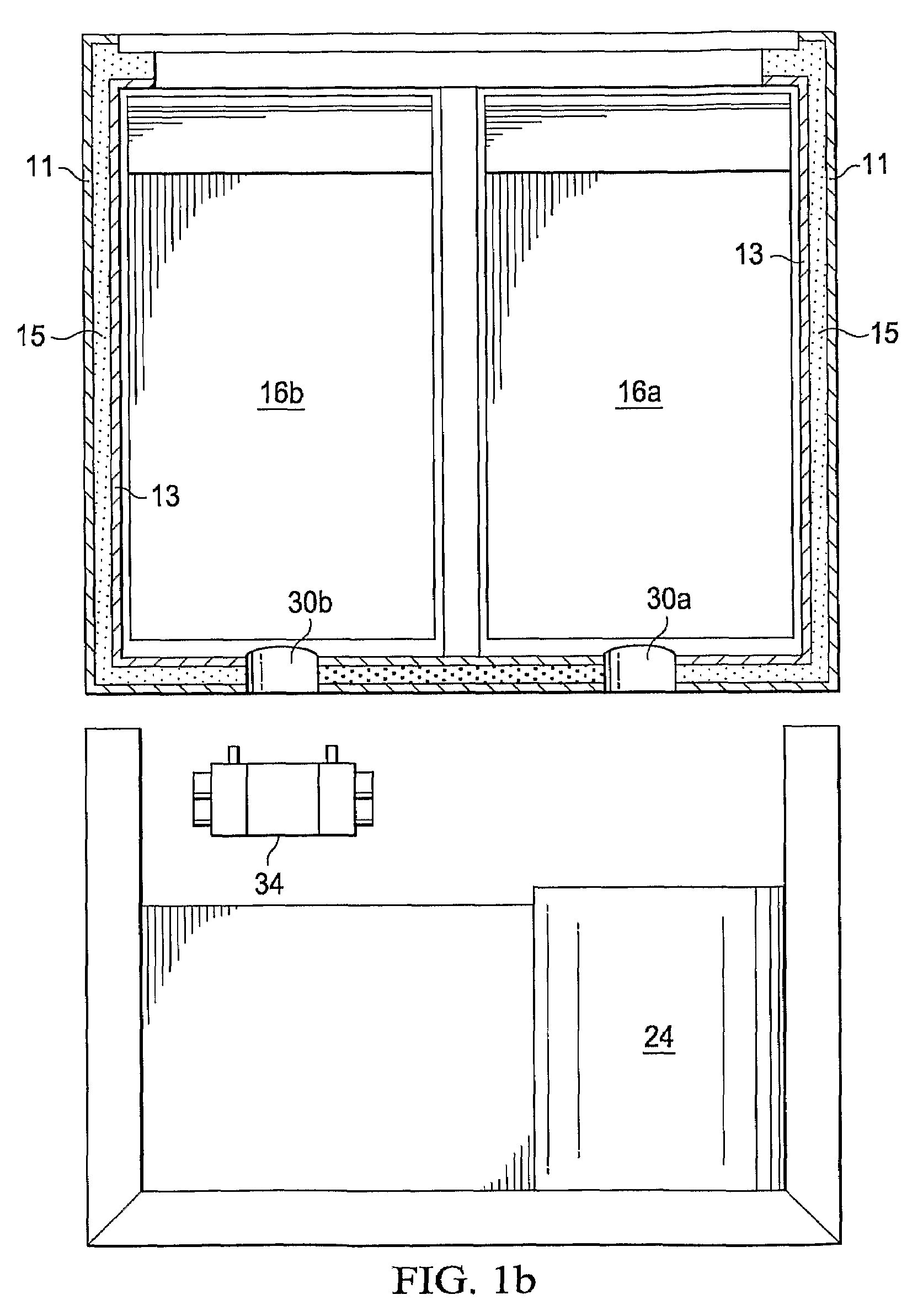Liquid Food Dispenser System and Method
a liquid food dispenser and liquid technology, applied in liquid handling, pliable tubular containers, instruments, etc., can solve the problems of difficult cleaning and sanitization of the system, increased risk of bacterial contamination, and inconvenient use of the system, so as to achieve the effect of simply and accurately determining the volume of the remaining produ
- Summary
- Abstract
- Description
- Claims
- Application Information
AI Technical Summary
Benefits of technology
Problems solved by technology
Method used
Image
Examples
Embodiment Construction
[0089]The making and using of the presently preferred embodiments are discussed in detail below. It should be appreciated, however, that the present invention provides many applicable inventive concepts that can be embodied in a wide variety of specific contexts. The specific embodiments discussed are merely illustrative of specific ways to make and use the invention, and do not limit the scope of the invention.
[0090]The present invention will be described with respect to preferred embodiments in a specific context, namely a beverage dispensing machine. The invention may also be applied, however, to other dispensing systems, or other systems with sanitary or fluid measurement requirements.
[0091]In illustration of one embodiment of the present invention, FIG. 1a shows a three-dimensional view of a beverage dispensing machine 10. The liquid product is stored in a bag (not shown) disposed within boxes 16a and 16b. The liquid product could be milk, juice, beverage concentrate, or other ...
PUM
 Login to View More
Login to View More Abstract
Description
Claims
Application Information
 Login to View More
Login to View More - R&D
- Intellectual Property
- Life Sciences
- Materials
- Tech Scout
- Unparalleled Data Quality
- Higher Quality Content
- 60% Fewer Hallucinations
Browse by: Latest US Patents, China's latest patents, Technical Efficacy Thesaurus, Application Domain, Technology Topic, Popular Technical Reports.
© 2025 PatSnap. All rights reserved.Legal|Privacy policy|Modern Slavery Act Transparency Statement|Sitemap|About US| Contact US: help@patsnap.com



